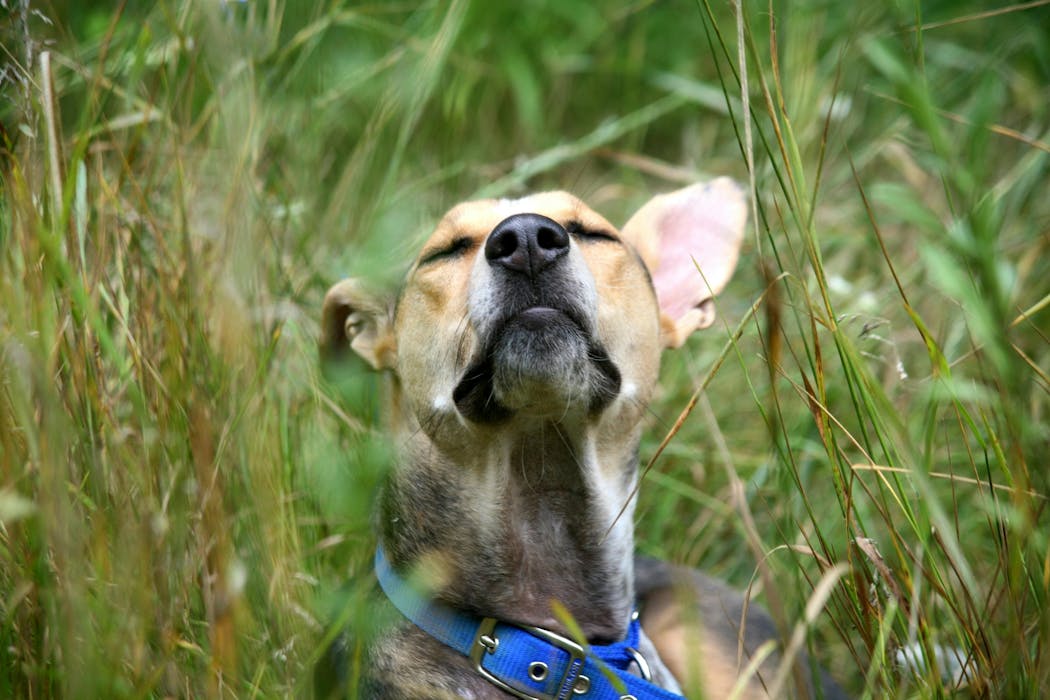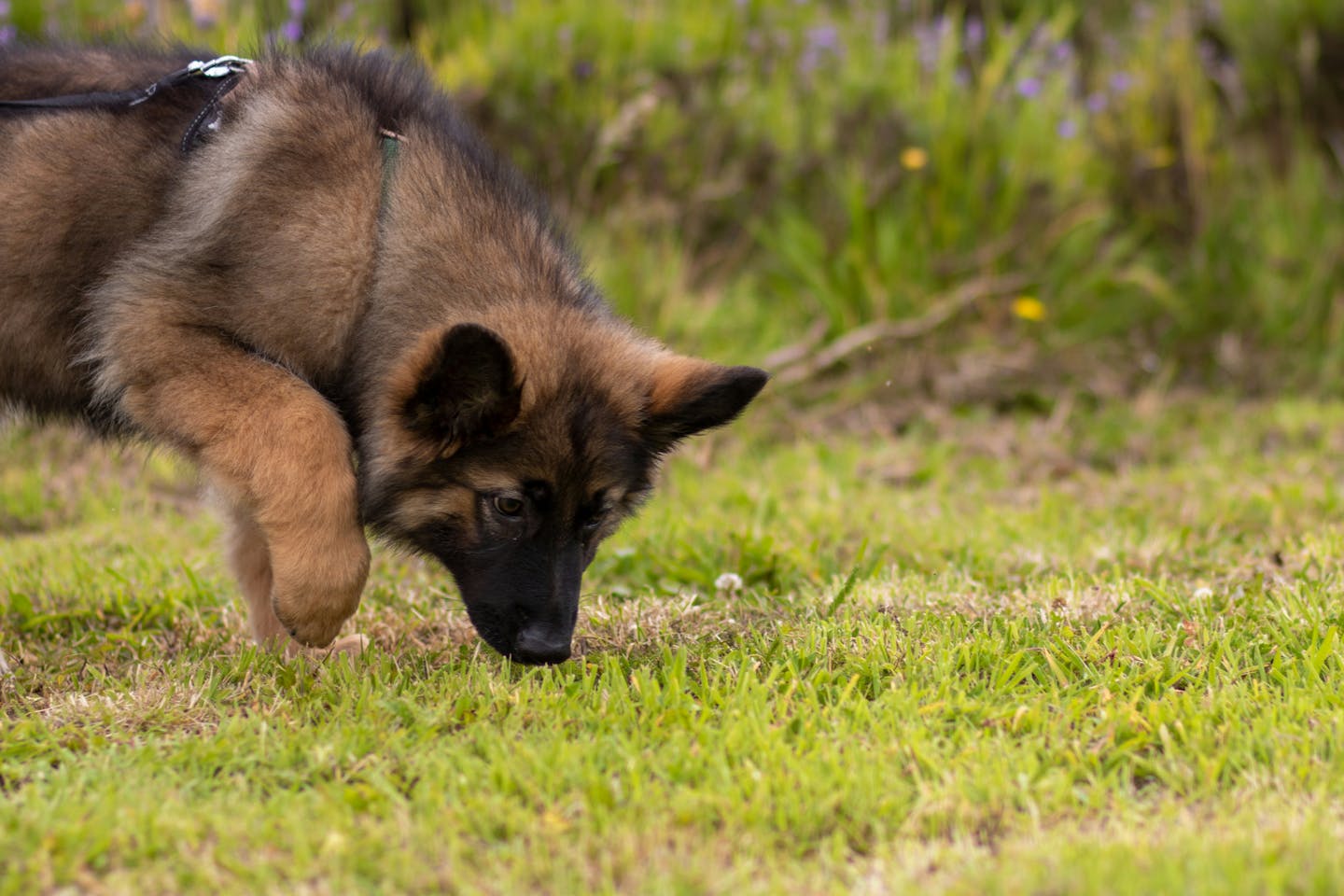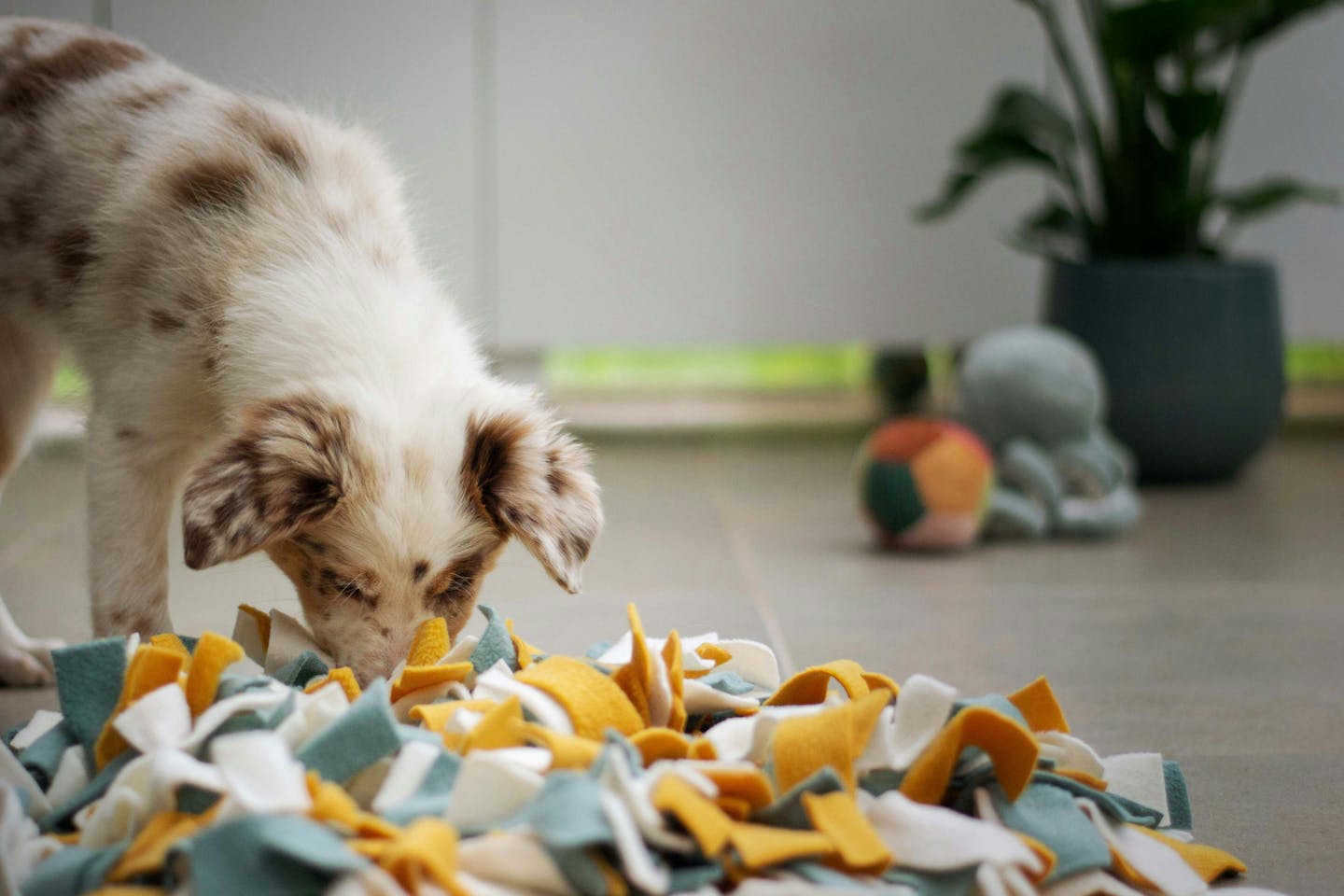
While we are captivated by a vivid sunset and breathtaking views, dogs have their noses to the ground, reading the odour stories left behind by other dogs and animals. The pile of crinkling autumn leaves that gathers the smells of passers-by provides a snapshot of how dogs connect with their world – through scent.
But sniffing isn’t just a hobby for dogs. Studies have shown specific scents introduced to the environment can reduce dogs’ stress and boredom, increase relaxed behaviours and increase engagement with toys or their surroundings.
Research has shown dogs have scent preferences. The novelty of the scent also appears to be important.
So providing opportunities for dogs to sniff more of the environment and put their nose to use may be the ultimate way to enrich their wellbeing, no matter their age, breed, or size.
This is something professional dog trainers already know, as our recent study published in Applied Animal Behaviour Science highlights. Based on the study’s findings, here are six ways you can provide different types and varieties of scent enrichment for your dog. They are an easy, low-impact and low-cost way to provide mental stimulation and expand your dog’s world.
1. Scent work
Scent work classes have been growing in popularity. They involve pet dogs learning to find a hidden scent and signalling the location.
Engaging in scent work has shown to increase optimism in dogs and help build more focus compared to other sports such as those requiring agility. Trainers agree it is good for a dog’s overall wellbeing.
Pet dogs trained in scent work have contributed to dog-citizen science projects – sniffing out invasive pests, wildlife and helping advance lung cancer detection.
You can even teach your dog to locate your phone, wallet or keys with this training exercise.
2. Sniff-based walks
These are walks centred on letting a dog safely explore the world with their nose, with no social disturbances from other dogs or people. A kind of “sniffari”.
Allowing dogs to “read the local news” of their environment is low cost, easy to implement for all caregivers and commonly used by dog trainers. “Sniff spaces or parks” are rented spaces to book and may be better choices for some than dog parks.

3. Scent-enriched environment
Adding scents of animal or plant origin to a dog’s home environment can encourage exploration with their noses (without consuming anything). In turn, this can produce various behavioural benefits, such as increasing optimism in dogs and the amount of time they spend resting.
Animal scents may be straw bedding, sheep poo, rabbit urine, an old saddle, a brush used by another animal, feathers or animal hair safely introduced in a container or sack for investigation.
Plant scents such as food essence (for example, vanilla or coconut), dried thyme, lavender oil or fresh oregano diluted in water and sprayed or scattered on surfaces can help dogs relax and bark less.
4. Sensory gardens
These are outdoor areas planted with pet-friendly herbs, plants and flowers. These include rosemary, basil, thyme, catnip, lavender, valerian, parsley and mint.
Check in with your vet to ensure your choices are right for your dog.

5. Scatter search feeding
This is a kind of food treasure hunt where dogs search for scattered food on the ground, in the grass or leaves, or hidden across an area.
Dogs do need to learn to do this. You can help them do so by pointing treats out and using a word to encourage them a few times until they become proficient.
6. Scent engagement games
Food hidden in material mats (a “snuffle mat”) or activity mats with pockets and flaps can be a great supervised indoor activity.
Alternatively, recycle cardboard boxes by arranging them in different sized layers across a room, and hide treats or a favourite toy inside them for an exciting treasure hunt.
If you’re not already using scent-based activities – whether you’re a trainer or dog caregiver – it’s well worth trying them. They’re simple, engaging and hugely rewarding for dogs.
This article is republished from The Conversation, a nonprofit, independent news organization bringing you facts and trustworthy analysis to help you make sense of our complex world. It was written by: Jade Fountain, University of Adelaide
Read more:
- Water bears survive cosmic radiation with one DNA-protecting protein – learning how could boost human resilience, too
- Rare reptiles are moving up mountains as the world warms. They can’t keep doing it forever
- Woven baskets aren’t just aesthetically pleasing – materials science research finds they’re sturdier and more resilient than stiff containers
Jade Fountain consults for Animal Behaviour Matters. She receives funding from the Australian government through the Australian Government Research Training (RTP) Stipend.


 The Conversation
The Conversation
 Mediaite
Mediaite Detroit Free Press
Detroit Free Press New York Post Health
New York Post Health CNN
CNN New York Post Entertainment
New York Post Entertainment AlterNet
AlterNet WMUR Politics
WMUR Politics People Top Story
People Top Story The Daily Bonnet
The Daily Bonnet Reuters US Business
Reuters US Business